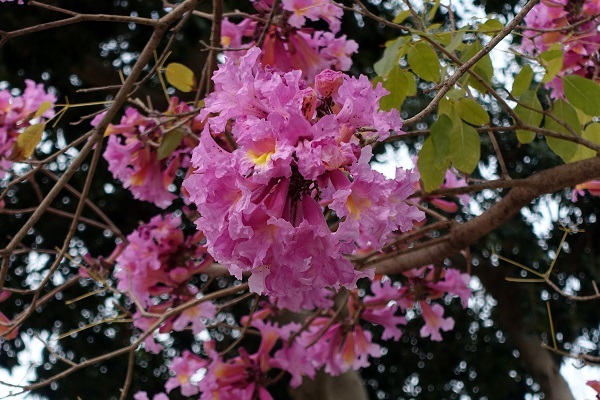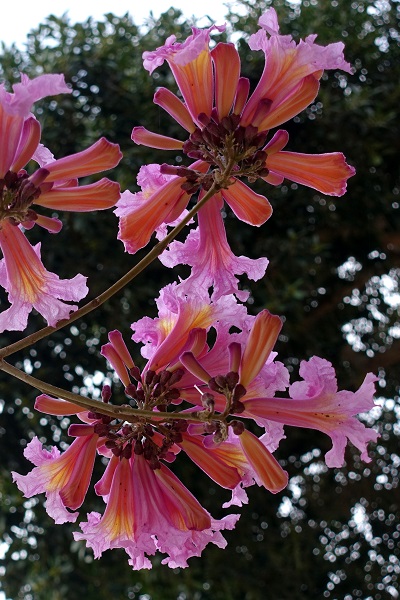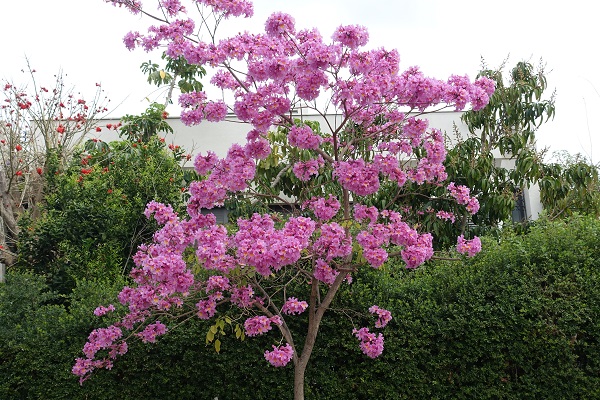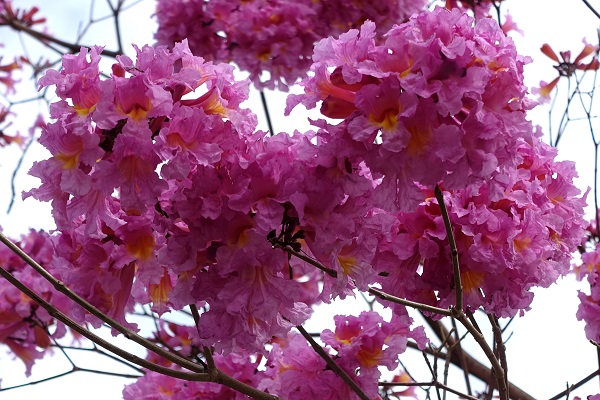Purple Tabebuia, pink ipê, pink lapacho, pink trumpet tree,
Hebrew: טבבויה איפה, Arabic: عيفقان
| Scientific name: | Tabebuia impetiginosa (Mart. ex DC.) Standl. | |
| Synonym name: | Handroanthus impetiginosus(Mart. ex DC.) Mattos | |
| Common name: | Purple Tabebuia, pink ipê, pink lapacho, pink trumpet tree | |
| Hebrew name: | טבבויה איפה | |
| Arabic name: | عيفقان | |
| Family: | Bignoniaceae, Trumpet-creeper Family, משפחת הביגנוניים |

|
| Life form: | Deciduous tree up to 8 meters | |
| Stems: | bark is brownish grey, tough and hard to peel. | |
| Leaves: | Opposite, petiolate, elliptic and lanceolate, with lightly serrated margins and pinnate venation; leaves palmately compound with usually 5 leaflets. | |
| Inflorescence: | Flowers arranged in clusters | |
| Flowers: | Large, tubular shaped, corolla is often pink or magenta, though exceptionally seen white, about 2 inches long. There are four stamens and a staminode | |
| Fruits / pods: | Capsule containing several winged seeds. | |
| Flowering Period: | March, April | |
| Origin: | Argentina, Paraguay |

Derivation of the botanical name: Tabebuia, a native Brazilian word meanong "ant wood," as ants live in the hollow dead twigs. impetiginosa, referring to medicinal use, specifically for impetigo.
This plant holds great promise for the effective treatment of cancers such as leukemia, candida and other troublesome infections, debilitating diseases (including arthritis), as well as a host of other complaints. 


|